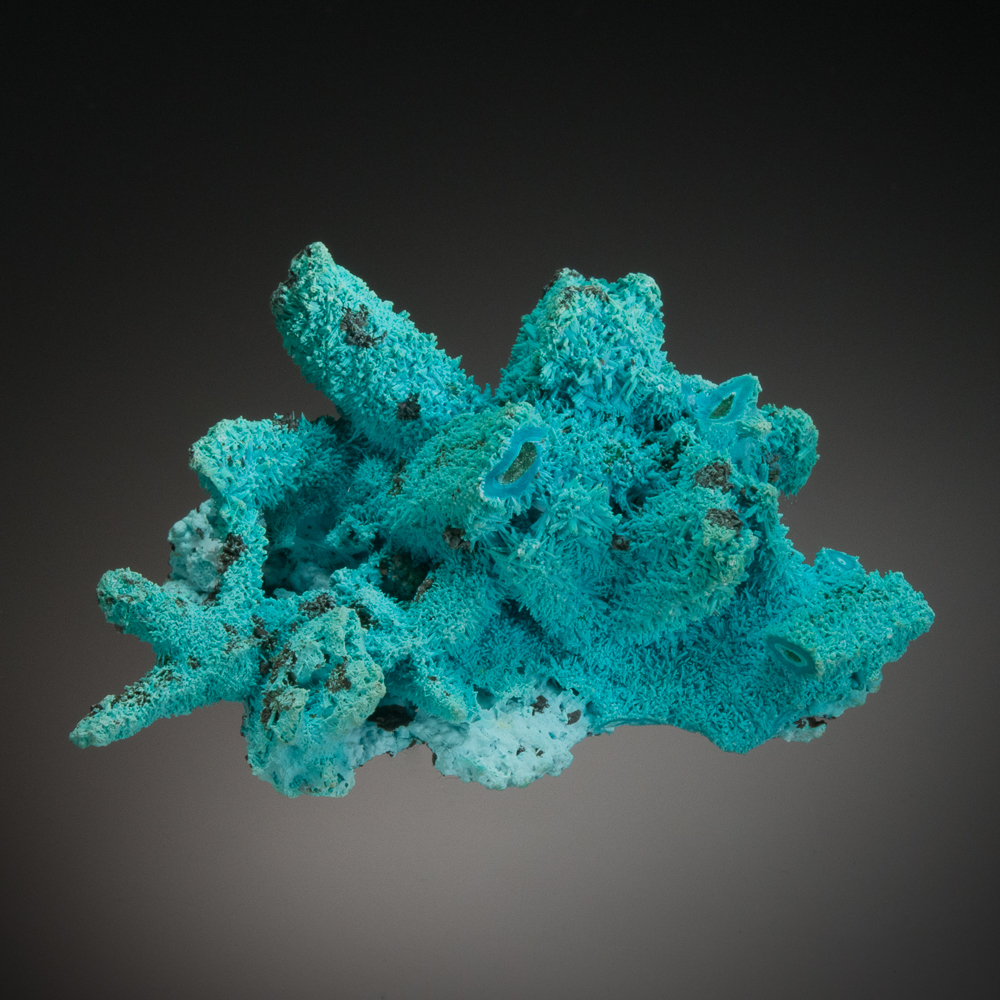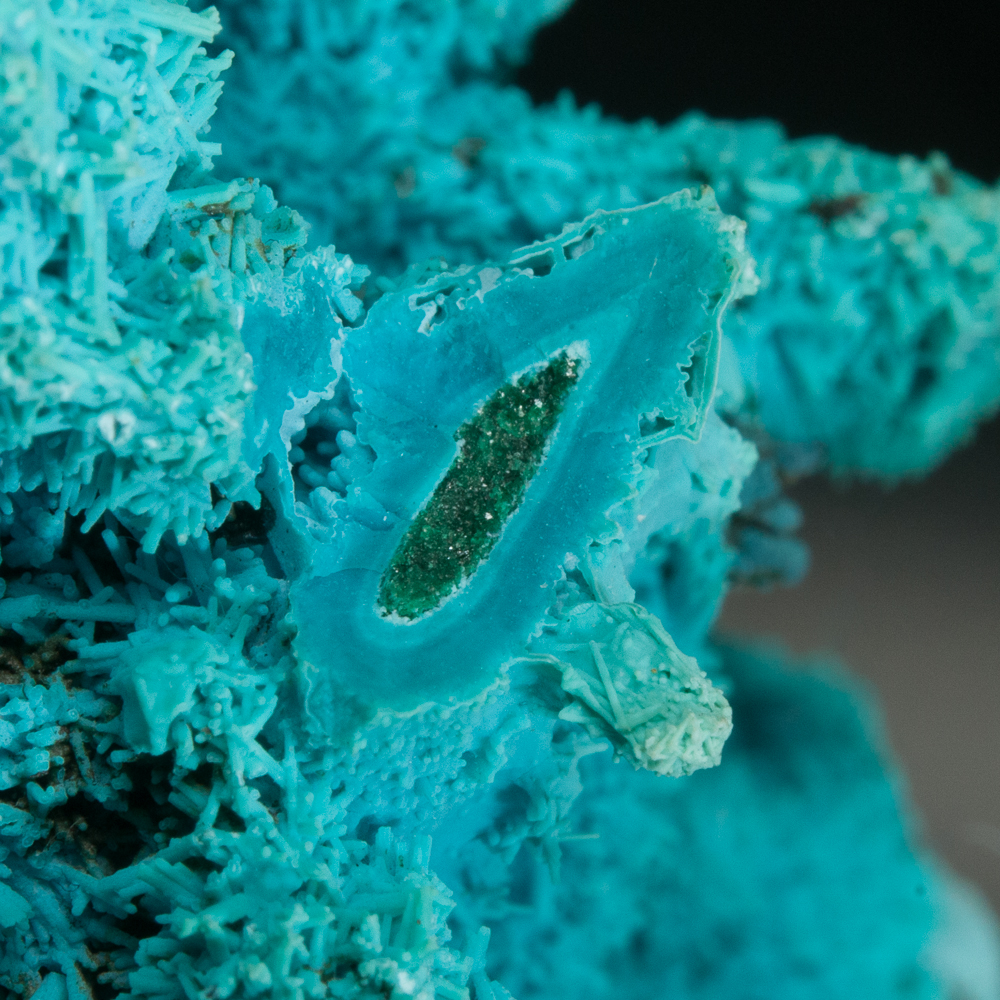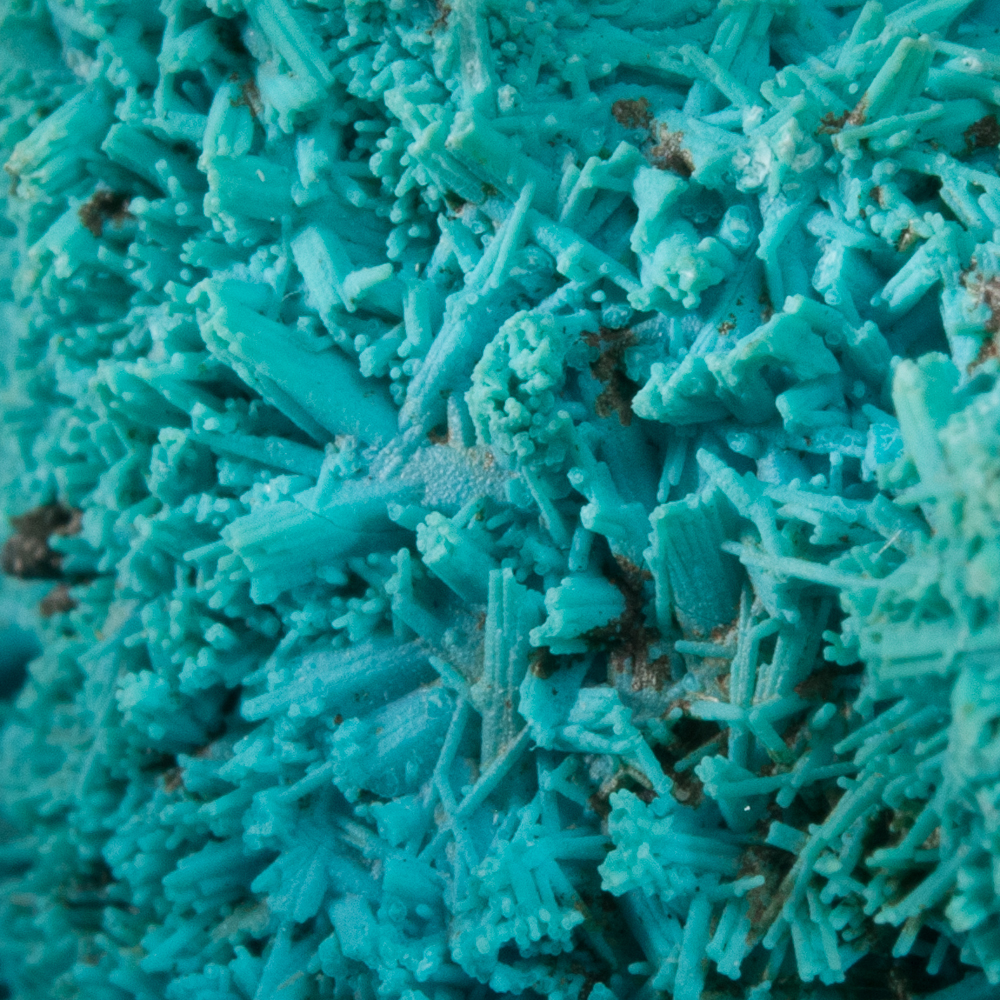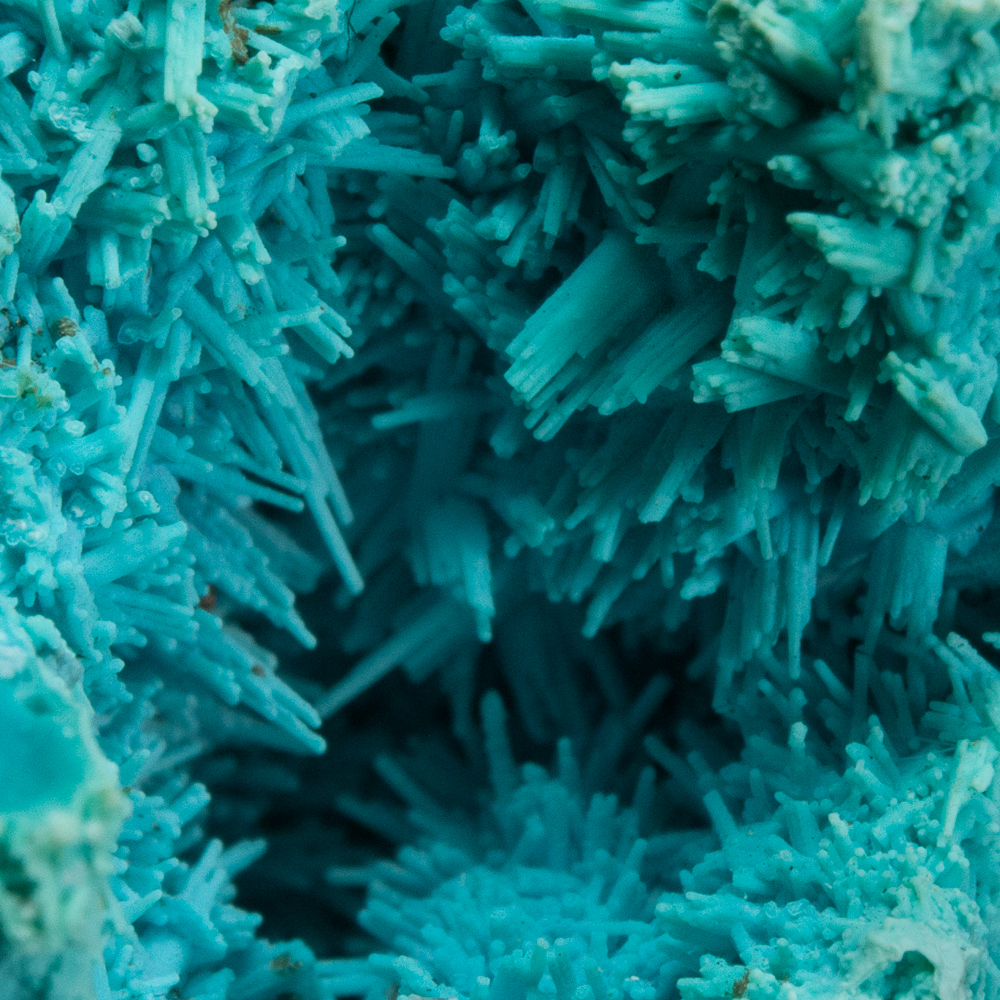Description
Detailed Description
This chrysocolla specimen has superb colour and form. The specimens from this find are chrysocolla on malachite pseudomorphs after azurite (as discussed in the full description below, I suspect its formation history is quite complex.)
This one is particularly illustrative of the history of formation – two of the pseudomorphs are incomplete, with cross-sections clearly showing the malachite core. As displayed, the overall vivid colourful is what is striking about this one.
A beautiful specimen of chrysocolla.
About These Chrysocolla Pseudomorph Specimens
Definitive identification of these specimens has been confirmed. The specimens from this find have been identified as chrysocolla by way of chemical analysis conducted by Dr. Hexiong Yang of the University of Arizona. A preliminary Raman spectroscopic analysis had led to the suggestion of an ajoite identification (which was posted on mindat), but the Raman for each of these minerals is very similar and was therefore inconclusive.
A couple of observations about these specimens lead me to believe there is some complexity to the formation history. In spots where the underlying pseudomorphs are incomplete, one can examine the cross-sections. Some of those cross-sections reveal that the malachite core is entirely gone (and seems to be chrysocolla), while others retain some malachite. In addition, upon close examination with magnification, one can see there are small malachites sprinkled about, meanwhile the chrysocolla “crystals” have a rather rounded appearance. I believe that the small chrysocolla aggregates themselves are related to the malachite, as pseudomorphs after the malachite. These specimens might in fact be “chrysocolla pseudomorphs after malachite, on chrysocolla pseudomorphs (partial and complete) after malachite pseudomorphs after azurite.” Doesn’t fit on a label so easily, but these are highly unusual and remarkable specimens.
These are delicate specimens, with some growths that are thin. As a result, there are incomplete pseudomorphs on almost all I have seen – in fact some are either prominently or mostly without complete ones. These incomplete pseudomorphs actually help to guide our understanding of the specimen’s formation.





